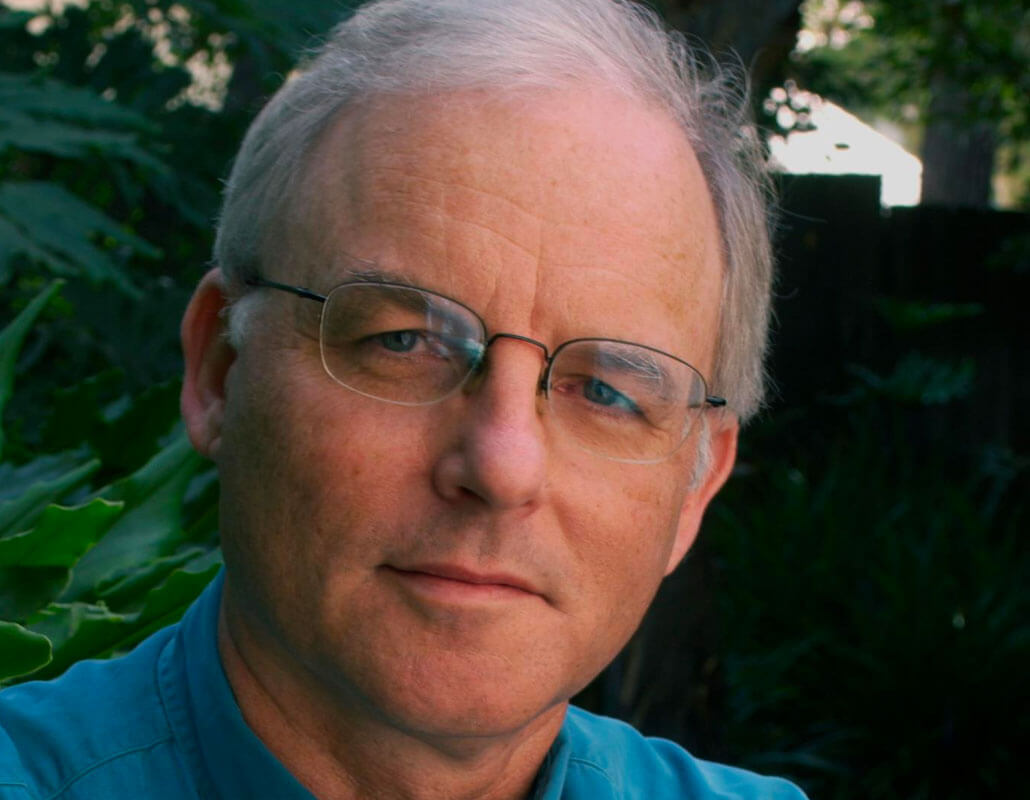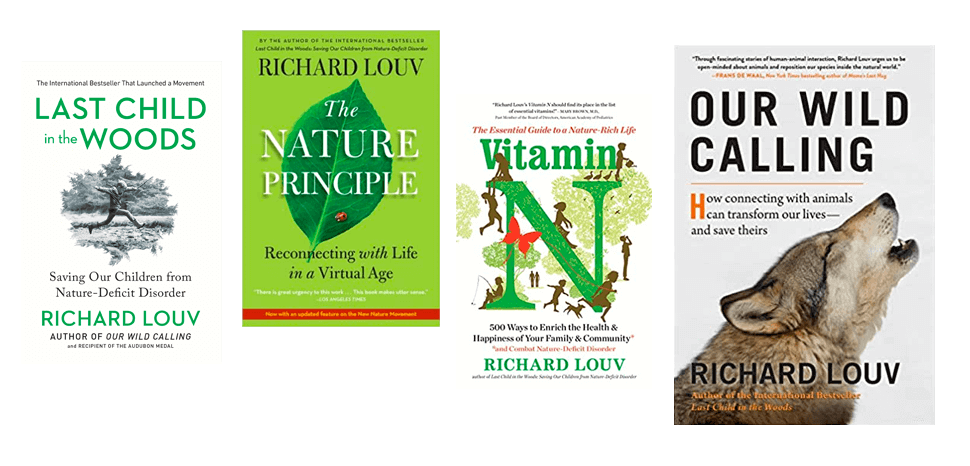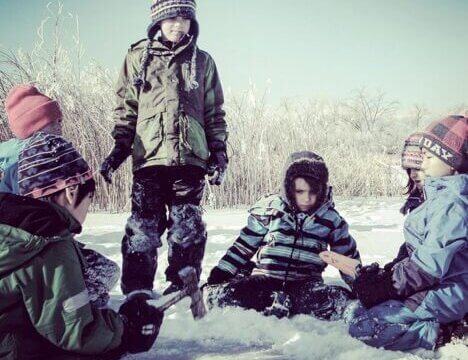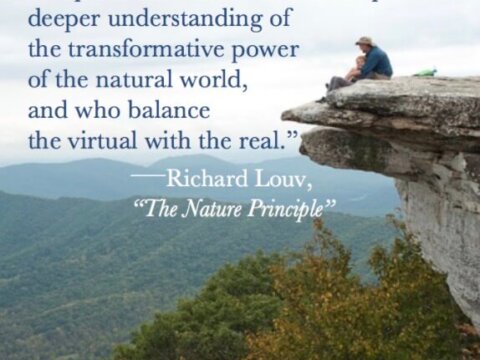The future is going to be better than it used to be: Thoughts for the New Year
Some say the future isn’t what it used to be. Here’s a different view. The future is going to be better than it used to be.
Sure, the news looks challenging. But just look how far we’ve come in such a short time — and consider the potential for the children and nature movement in 2009. The real miracle is the rapidly growing network of thousands of individuals, families and organizations that have made this movement their own. Folks like you.
We have a long way to go, but the grassroots are growing; and so are the netroots.
During the past three years, the Children & Nature Network’s role has been to collect and make easily available the growing body of information about the importance of nature to children; to help build a broad network of support for that movement; to educate the public about the movement; and to develop new methods and tools. Through the leadership of C&NN Managing Director Amy Pertschuk, we’ve seen a dramatic expansion of our Web site, the most in-depth source of information and tools available related to the children and nature movement. Awareness is spreading.
Between 2006 and 2008, C&NN helped galvanize over 50 regional and statewide campaigns in North America. In 2008, we sponsored a C&NN Grassroots Gathering of over 100 grassroots leaders — including young people from very diverse backgrounds. We worked with the Sierra Club, National Wildlife Federation, the Conservation Fund, National Audubon, Hooked on Nature, the Trust for Public Land and many other groups to support programs that connect kids to nature and to promote changes in public policies.
Last year’s most visible legislative success came in September, when the U.S. House of Representatives passed the No Child Left Inside Act, sponsored by the No Child Left Inside Coalition. If approved this year in the Senate, the bill will help the states support environmental education.
Our Canadian partners, including Nature Child Reunion and the Robert Bateman Get to Know Program, are quickening their strides. And through the efforts of C&NN President Dr. Cheryl Charles, the International Union for the Conservation of Nature, at its World Conservation Congress in Barcelona, officially designated connecting children with nature as an international priority.
These are just a few of our shared milestones.
Now comes 2009, and the beginning of a new era — with new opportunities to strengthen ties and build new relationships.
The Association of Fish and Wildlife Agencies (AFWA), for example, has presented recommendations to President-elect Obama. AFWA listed children and nature as No. 2 in their roster of five Priorities of a National Agenda for State Fish and Wildlife Agencies. Other conservation-related initiatives are in the works.
We’re pleased that the incoming Obama administration has indicated there will be expanded federal emphasis on early childhood education.
With that in mind, C&NN will continue to make the case for the child-nature connection and environmental literacy as fundamental elements of children’s cognitive development. We believe that future education reform must widen the definition of the classroom. To help young people learn in nature, not just about nature, policy-makers must view parks, wildlands, farms and ranches as the new schoolyards. We’ll push for an expansion of the number of nature-oriented preschools, including experiential education and greened schoolyards in Head Start.
This month, in an article titled “Nature Makes a Comeback in Wisconsin Schools,” the Wisconsin State Journal reported: ” To reconnect children to nature, school districts are expanding school forests around the state while also developing low-cost, small projects such as rain gardens that can be effective even in poor urban areas.”
We’d like to see more progress like that.
In 2009, education reform must also be about a reformation of values, not just the distribution of more information.
Consider the words of Oberlin professor David Orr, one of the world’s foremost proponents of environmental literacy and a leading voice on climate change. In his seminal essay, “What Is Education For,” he describes “the way our education has prepared us for how to think about the natural world.” Orr, a member of C&NN’s board of advisors, argues correctly that more education “is no guarantee of decency, prudence or wisdom. More of the same kind of education will only compound our problems.” The worth of education “must now be measured against the standards of decency and human survival. The truth is that many things on which your future health and prosperity depend are in dire jeopardy: climate stability, the resilience and productivity of natural systems, the beauty of the natural world, and biological diversity.”
We share David Orr’s belief that nature-deficit disorder belongs on this list, and is linked to each of these priorities. We’ll continue to make the case that a meaningful human relationship with nature, shaped in children’s formative years, is crucial to our society’s practice of stewardship, its sense of community, and the strength of family bonds. We also believe that natural play will increasingly be recognized as a key element in any successful effort to turn the tide on child obesity.
The emerging body of scientific knowledge supports these theses, but more research is needed. This is why one of C&NN’s priorities will grow in importance.
In November, C&NN board members Dr. Stephen R. Kellert and Dr. Martha Farrell Erickson convened leading scholars and co-facilitated the first National Children and Nature Research Summit. Co-sponsored by Yale University, the University of Minnesota and the Children & Nature Network, the summit brought together 20 eminent scholars and practitioners from throughout the United States to address the importance of nature in children’s lives, to identify strengths and gaps in current knowledge, and to establish general principles and guidelines for inquiry. Insights from this summit will be available this year in a white paper that we believe will help stimulate future research and the necessary funding to support it.
In the meantime, C&NN’s website continues to report the growing body of correlative research. Among the studies published in major journals in recent months: a new one from Andrea Faber Taylor and Francis Kuo showing that children with ADHD concentrate better after walking in a park; UK research finding that living near parks and woods boosts health, regardless of social class; and in October, researchers at Indiana University School of Medicine-Purdue University and the University of Washington reported that greener neighborhoods are associated with slower increases in children’s body mass, regardless of residential density. One reason that the last point is important, as Kuo says, is that it dispels the mistaken assumption that more green equals more sprawl.
We need nearby nature everywhere, especially in the most urban neighborhoods.
That principle must be among the central precepts of any planning for the future of urban design, education, and health care. As Howard Frumkin often says, “Yes, we need more research, but we know enough to act.”
This brings us to the need to examine how we act.
In the current economic climate, we need a new model for change — and new tools to stimulate cultural transformation. That transformation is most likely to occur at the personal and neighborhood level, where we live, work and play.
In 2009, with support from the W.K. Kellogg Foundation, C&NN will continue to work with three Michigan communities, applying the principles of our C&NN Community Action Guide. The design of our built environment is a key factor. Across the country, we’ll encourage urban planners, neighborhood organizations and community action groups, along with such organizations as the Trust for Public Land, to protect the remaining islands of urban nature — and create new ones. One possibility: neighbors working with conservancy groups to establish what might be called “nearby-nature trusts.”
We also hope to encourage young people to seek careers in the fields and professions that connect people, particularly children, to nature — to become park rangers, biophilic architects and urban designers, nature therapists, natural play organizers and natural teachers.
In a similar vein, C&NN’s Natural Leaders strategy, which, with the help of the Sierra Club and other supporters, will continue to encourage young people to organize themselves as leaders of the movement. C&NN Board members Martin LeBlanc and Brother Yusuf Burgess are helping to guide that effort.
Working with our partners ecoAmerica, the Nature Conservancy and other non-profit or business partners, C&NN will help launch a major social marketing campaign to directly engage parents and grandparents. And in coming weeks, we will officially launch the C&NN Nature Clubs for Families Initiative, with funding help from REI and other groups. Coming to our Web site soon: an easily downloaded Family Nature Clubs Tool Kit designed to give families the tools and inspiration they need to take action in their own lives — without waiting for programs or funding. Also coming in 2009: C&NN’s Green Grandparents Campaign. These initiatives will be featured as part of C&NN’s upcoming Children and Nature Awareness Month, in April.
Think how the lives of our children — our lives, too — would improve if these new forms of social-nature networking were to spread as quickly as book clubs and Neighborhood Watches did in recent decades, or the use of social networking tools did during the 2008 presidential campaign.
We believe that you and thousands of other people like you will help shape the coming era, a time of human restoration through nature.
Despite the bad news that dominates current news coverage, we believe that we’re seeing the emerging shape in a new landscape, that there is no practical alternative to hope. And we agree with the poet Emily Dickinson, who wrote: “Hope is the thing with feathers/That perches in the soul/And sings the tune without the words/And never stops — at all.”
The future: better than it used to be.
-
Network News
POLICY UPDATE: Policy and advocacy for the children and nature movement
-
Voices
Binoculars, bald eagles and my journey as a Black birder
-
Richard Louv
THE WONDER BOWL: Ten Spring and Summer Nature Activities for Kids and Adults
-
Network News
Minneapolis Spotlight: The promise and possibilities of parks for youth
-
Voices
Why nature is my motherhood ally







Commentaries on the C&NN website are offered to share diverse points-of-view from the global children and nature movement and to encourage new thinking and debate. The views and opinions expressed are those of the author(s) and do not necessarily reflect the position of C&NN. C&NN does not officially endorse every statement, report or product mentioned.